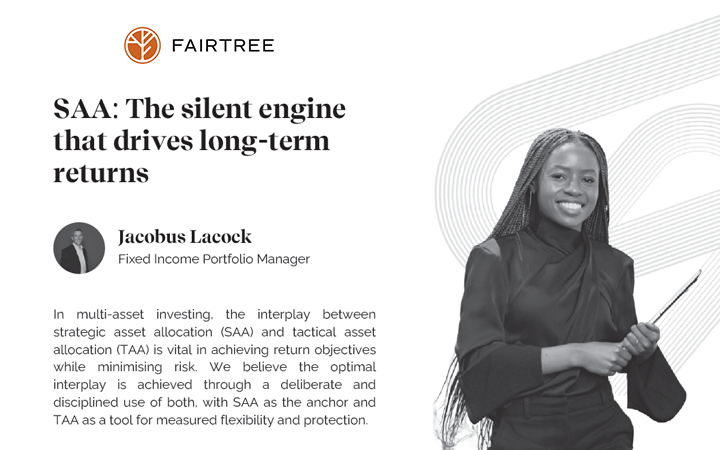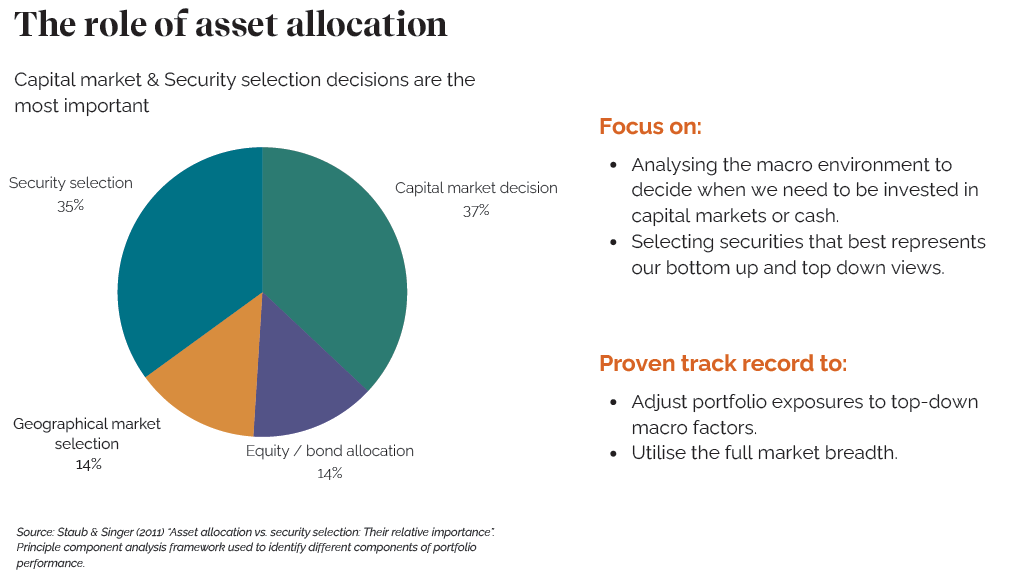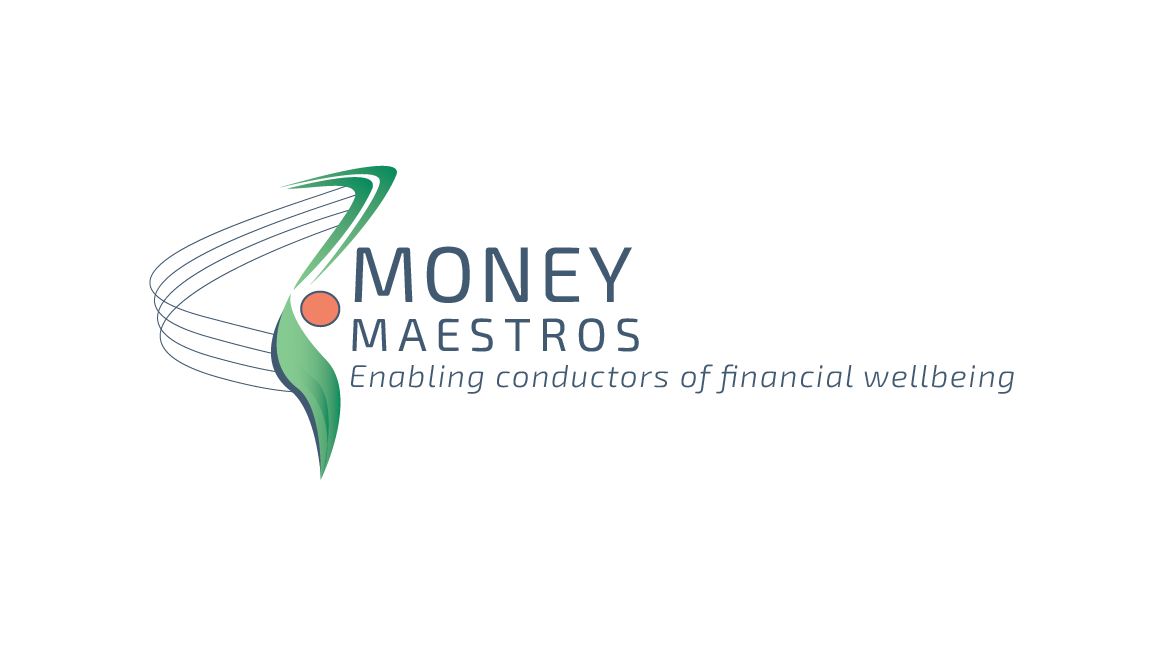
The Role of SAA
SAA is the cornerstone of a robust investment process. It represents the deliberate, long-term allocation across asset classes based on a portfolio’s return objectives and risk tolerance. SAA provides the structural blueprint for achieving investment goals.
We rely on portfolio optimisation to help determine the most efficient allocation. Our framework optimises for the best risk-adjusted returns while maximising the probability of achieving specific target returns.
For example, the Fairtree Balanced Prescient Fund is built around an SAA that targets a real return of CPI + 5%. This target reflects the long-term requirements of many investors in real terms. The Fund’s optimiser-driven construction increases the likelihood of reaching this return objective with the least amount of unnecessary risk, and its rolling three-year performance since inception has achieved its SAA (CPI +5%) more than threequarters of the time.
Importantly, when we talk about “risk,” we believe it goes beyond volatility or drawdowns alone. Too often, risk is framed only as the journey (standard deviation, value-at-risk, or the discomfort investors may feel during short-term fluctuations). But we believe the destination matters more. A portfolio that consistently experiences low volatility but fails to meet its return target is not a successful one.
The Fairtree Balanced Prescient Fund, on a risk adjusted basis, has consistently reached its target.

The limits of TAA
Many academic studies and practical experiences show that aggressive TAA often detracts from longterm returns. Timing markets consistently is extremely difficult, and excessive deviation from the SAA can result in costly errors.
The seminal Singer (2000) study emphasises that the most important decision is the market exposure itself, the structural allocation to equities, bonds and alternatives. We believe TAA should primarily be used for protection and reducing exposure in extreme risk-off environments or opportunistically take advantage of dislocations.

TOUR APPROACH
Our approach is to maintain a tight rein on our SAA and use TAA sparingly through modest, dynamic overweight or underweight positions. This disciplined approach ensures we don’t drift from our long-term objectives while retaining the ability to react to macro shifts. Only when we believe earnings recessions are approaching, which may lead to severe drawdowns, willwe use TAAmore aggressively.
A holistic investment approach
At Fairtree, we believe our edge lies in how we bring together top-down macro understanding with bottom-up insight. Rather than expressing macro views through large TAA swings, we prefer to express them within asset classes through security selection and sector rotation. This has proven to be a more reliable method of reflecting macro conviction. For example, a bearish view on global growth may lead us to favour defensive sectors or companies with pricing power within equities, rather than aggressively reducing equity exposure in the TAA.
Our investment process is grounded in diversity and depth:
SAA for growth and diversification, giving structure and consistency.
TAA for flexibility and risk protection, used cautiously.
Security and sector selection to reflect macro themes in a risk-efficient way.
Fairtree’s multi-asset philosophy is simple: anchor portfolios in strong strategic foundations and remain nimble at the edges. TAA is not the hero of the story; it is a tool for managing tail risk and opportunistic tilts. Real value is added through intelligent design of SAA and thoughtful expression of macro themes through security selection.

